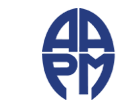| Question 1: Grand challenges provide value to the medical imaging research community by: |
| Reference: | Armato SG III, Drukker K, Li F, Hadjiiski L, Tourassi GD, Engelmann RM, Giger ML, Redmond G, Farahani K, Kirby JS, Clarke LP: The LUNGx Challenge for computerized lung nodule classification. Journal of Medical Imaging 3: 044506-1–044506-9, 2016.
�
|
| Choice A: | Making available a common set of images to all participating groups. |
| Choice B: | Advertising a specific clinical need. |
| Choice C: | Increasing the intellectual property value of participants’ methods. |
| Choice D: | Connecting academic groups with industry partners. |
| Question 2: An atlas-based segmentation algorithm uses _____ to align the atlas with a query image? |
| Reference: | T. Rohlfing, R. Brandt, R. Menzel, D. B. Russakoff, and C. R. Maurer, Jr., Quo Vadis, Atlas-Based Segmentation? The Handbook of Medical Image Analysis – Volume III: Registration Models. Kluwer Academic / Plenum Publishers, 2005, pp. 435–486. |
| Choice A: | Deformable registration. |
| Choice B: | Shape models. |
| Choice C: | Atlas selection. |
| Choice D: | Majority voting. |
| Choice E: | Hausdorff distance. |
| Question 3: Atlas selection would be best performed according to which of the following strategies?
|
| Reference: | Langerak TR, Berendsen FF, Van der Heide UA, Kotte AN, Pluim JP. Multiatlas-based segmentation with preregistration atlas selection. Med Phys. 2013 Sep;40(9):091701. doi: 10.1118/1.4816654. |
| Choice A: | Majority voting. |
| Choice B: | Random selection. |
| Choice C: | The atlas with the lowest Dice similarity. |
| Choice D: | The atlas with the highest inter-observer variability. |
| Choice E: | Rigid registration followed by Mutual information. |
| Question 4: One advantage of the Hausdorff distance as an evaluation metric is: |
| Reference: | http://autocontouringchallenge.org |
| Choice A: | Does not require completely segmented organs. |
| Choice B: | It is easily and consistently implemented. |
| Choice C: | It is less sensitive to islands and holes. |
| Choice D: | Works well for tubular structures contoured at different lengths. |
| Choice E: | Generates accuracy measurements in millimeters. |
| Question 5: When using a state-of-the-art algorithm, what Dice similarity would you expect to receive for the parotid gland? |
| Reference: | Sharp G, Fritscher KD, Pekar V, Peroni M, Shusharina N, Veeraraghavan H, Yang J. Vision 20/20: perspectives on automated image segmentation for radiotherapy. Med Phys 41(5):050902, 5/2014. |
| Choice A: | 1.00 |
| Choice B: | 0.95 |
| Choice C: | 0.85 |
| Choice D: | 0.65 |
| Choice E: | 0.30 |
| Question 6: Most radiation treatment planning systems import/export the normal tissue structures through...... |
| Reference: | Law MY, Liu B. DICOM-RT and Its Utilization in Radiation Therapy. Radiographics. 2009 May; 29(3): 655-67. |
| Choice A: | DICOM RT structure set. |
| Choice B: | Metadata image. |
| Choice C: | Binary image. |
| Choice D: | Triangular mesh. |
| Question 7: In contouring the OARs for treatment planning, a margin is usually applied to an OAR with __________ structure; and it is important to contour the whole organ of a __________ structure. |
| Reference: | INTERNATIONAL ATOMIC ENERGY AGENCY, Accuracy Requirements and Uncertainties in Radiotherapy, IAEA Human Health Series No. 31, IAEA, Vienna (2016). |
| Choice A: | serial-like; serial-like. |
| Choice B: | serial-like; parallel-like. |
| Choice C: | parallel-like; serial-like. |
| Choice D: | parallel-like; parallel-like. |
| Question 8: The spatial uncertainty of normal tissue contouring in external beam radiotherapy has a range about.... |
| Reference: | INTERNATIONAL ATOMIC ENERGY AGENCY, Accuracy Requirements and Uncertainties in Radiotherapy, IAEA Human Health Series No. 31, IAEA, Vienna (2016). |
| Choice A: | 1-3 mm. |
| Choice B: | 2-5 mm. |
| Choice C: | 5-20 mm. |
| Choice D: | 10-50 mm. |
| Choice E: | 20-50 mm. |
| Question 9: In the following auto-segmentation methods, which one does NOT use the prior knowledge? |
| Reference: | Sharp G, Fritscher KD, Pekar V, Peroni M, Shusharina N, Veeraraghavan H, Yang J. Vision 20/20: perspectives on automated image segmentation for radiotherapy. Med Phys 41(5):050902, 5/2014. |
| Choice A: | Atlas-based segmentation. |
| Choice B: | Segmentation using statistical models of shape and appearance. |
| Choice C: | Segmentation using machine learning. |
| Choice D: | Segmentation using level sets. |
| Choice E: | All of the above. |
| Question 10: Which of the following measures will be affected by small outliers in the segmentation? |
| Reference: | Menze BH, Jakab A, Bauer S, Kalpathy-Cramer J, Farahani K, Kirby J, et.al, “The Multimodal Brain Tumor Image Segmentation Benchmark (BRATS)”; IEEE Trans. Med Imaging: 2015; 34(10): 1993-2024. |
| Choice A: | Hausdorff distance. |
| Choice B: | Modified Hausdorff distance. |
| Choice C: | Dice coefficient. |
| Choice D: | None of the above. |
